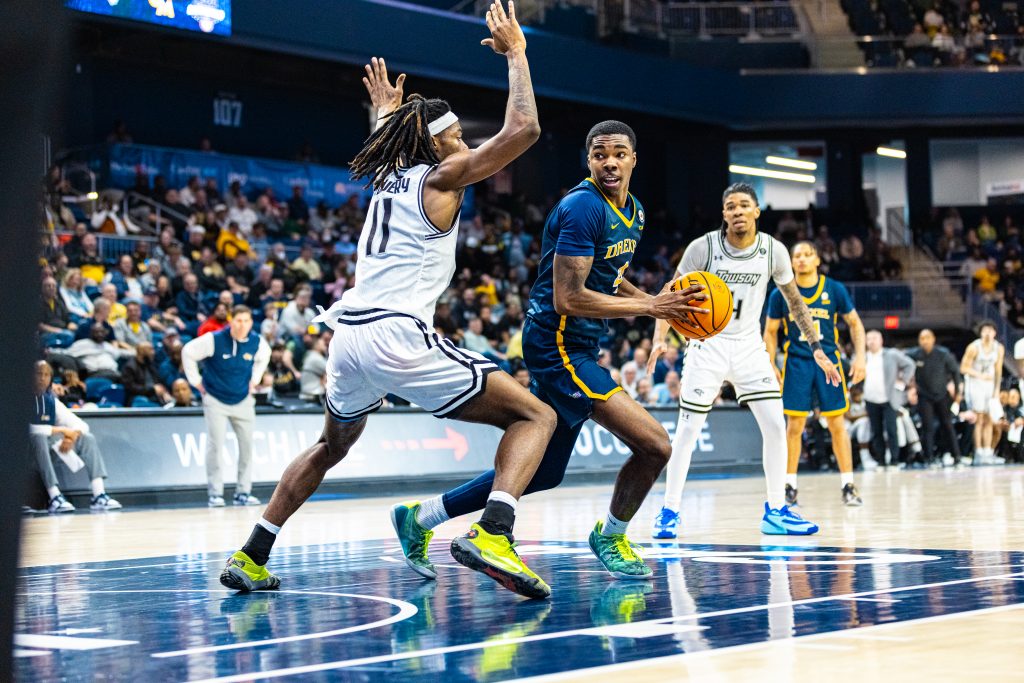
Unlike colleges such as the University of Alabama or Ohio State, Drexel is not typically top of mind when it comes to prestigious athletics programs. As a member of the Coastal Athletic Association, which is not part of the Power 5 conferences (which include the Atlantic Coast Conference, the Big Ten Conference, the Big 12 Conference and the Southeastern Conference), Drexel is classified as a mid-major. This label comes from the conference that a school’s men’s basketball team plays in. In today’s college athletic landscape, which is shaped by name, image and likeness opportunities, this characterization has limited the ability of Drexel’s student-athletes to fully benefit from NIL deals.
Unfortunately for Drexel, the shortcomings of the men’s basketball program have undermined the success of other Drexel athletics programs. Just this season, the men’s and women’s lacrosse teams made trips to the CAA championship, and the women’s team was consistently ranked as one of the top 25 programs in the nation. Both Drexel squash programs rank in the top 10, the rowing teams have dominated in recent competitions, and, in 2024, the women’s basketball team won the CAA championship and competed in March Madness.
Despite these achievements, Drexel is still a relatively unknown school in college athletics. While this can be attributed to a number of factors, perhaps the main issue of name recognition stems from the lack of NIL funding towards athletes.
Since the initial Supreme Court ruling back in 2021, NIL has transformed the landscape of college athletics. The court found that college athletes can profit off of their name, image and likeness on top of the scholarship given to them by their school.
In the four short years since this ruling, how athletes prioritize and decide the schools for their collegiate career has completely changed. Now, on top of following their dreams of professional sports, athletes are also weighing the possibility of making as much revenue as they can.
This dynamic is especially prevalent in men’s basketball, where it is not uncommon for players to enter the transfer portal two or three times. One example of this is PJ Haggerty, who has played on three different teams and recently announced he would be committing to Kansas State after negotiating to receive a $2.5 million NIL package. While athletes from mid-majors are not getting as large of deals as Haggerty, they still stand to benefit financially by transferring to schools with better NIL infrastructure.
During this offseason, Drexel’s men’s basketball team lost four of its most impactful players to the transfer portal. Cole Hargrove and Kobe McGee, who both earned CAA awards this season, transferred to Providence and Florida State University, respectively. Jason Drake announced he would spend his final year at the University of Indiana, and Yame Butler transferred to Butler University after an outstanding season. In recent memory, other standout players such as Amari Williams and Justin Moore have made moves to larger universities.
Despite head coach Zach Spiker’s claim of a culture with “a group that is connected [and] a locker room that loves being around each other” at Drexel, it seems not to be enough as the Dragons continue to lose top talent every offseason. What is the motive for these players entering their names into the NCAA transfer portal if not for potential NIL deals?
While NIL has given numerous opportunities to many different athletes, it has also created problems for universities struggling to keep up with the ever-changing rules. Currently, colleges believe that for NIL to be successful, rules and regulations are needed to stop the disproportionate allotment of money to players. At the time of publication, athletes are allowed to get paid in any amount and without any restrictions. In an attempt to make resources more equitable, the College Sports Commission was created by the Power 5 conferences to establish limitations.
For Drexel and other mid-major institutions, NIL equality is especially important, as they do not have the resources available to attract and keep star athletes. Earlier this year, an article in the Philadelphia Inquirer revealed that Drexel’s NIL resources rank in the bottom half out of all the schools in the CAA, raising concerns for Drexel and its sustainability in the coming years.
In December 2023, Drexel announced that they were launching the Dragon Fire Collective, a NIL Collective intended to support Drexel athletes by creating NIL opportunities for them. However, this effort seems to be inactive at the moment, as the last post on their Instagram was a “day in the life” video featuring Yame Butler from June 2024. Without an active collective to assist students in earning NIL money, Drexel is positioning itself further behind other mid-major universities and running the risk of losing athletes to the transfer portal.
The future of NIL remains uncertain to this day. Pending a judge’s decision on the House vs. NCAA lawsuit, which could allow schools to distribute up to $20.5 million to student-athletes, the CAA’s Board of Directors has voted to opt in to the settlement. If the judge rules in the athletes’ favor, CAA institutions, including Drexel, would be required to share their revenue.
While this decision is expected to come in late June, Drexel has already announced that they will comply with the CAA’s decision and that they are prepared to share revenue with their athletes, as confirmed by the Inquirer.
Other schools in the CAA, such as Stony Brook, have also stated plans to share their revenue with their athletes. On May 28th, they became the first school in the CAA to partner with a third-party platform to help manage revenue sharing. In addition to being an early adopter of the CAA’s mandate, Stony Brook, which has similar athletic success as Drexel, boasts one of the best NIL systems for a mid-major university.
Despite Stony Brook’s collective being launched around the same time as Drexel’s, it has made much more progress. Since the launch of the 1957 Club, the organization has hosted galas, created merchandise and partnered with NIL websites that allow fans to subscribe and gain access to the Seawolves’ athletes. Although these efforts have not entirely prevented players from entering the transfer portal this year, the university is still setting itself up for a better future than Drexel, which does not have any of these opportunities in place.
Drexel will never become the next Notre Dame, but that should not be an excuse to not build up a NIL system that prioritizes keeping players at Drexel, winning games and creating better opportunities for their athletes. With the upcoming ruling regarding revenue sharing, Drexel has the chance to level the playing field with other mid-major programs. Taking action now will make the university more competitive and set up every current and future athlete to have a successful career as a Drexel Dragon.


